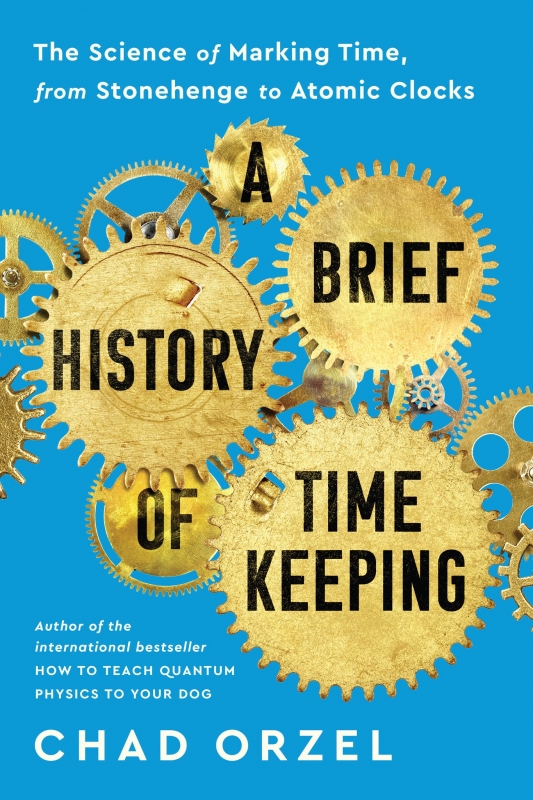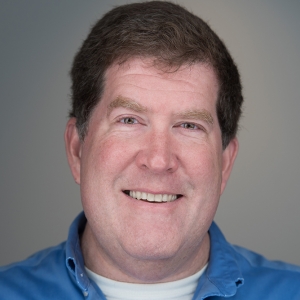Daylight saving time ends for most of the country at 2 a.m. Sunday, Nov. 6, when clocks “fall back,” resulting in one additional hour of sleep, but less sunlight and shorter days. DST began in March when clocks “spring forward” to make the daylight last longer.
Chad Orzel, associate professor of physics and astronomy, touches on the origins of daylight saving time in his latest book, “A Brief History of Timekeeping: The Science of Marking Time, from Stonehenge to Atomic Clocks.”
The following essay from Orzel is adapted from the book. It originally appeared in the Washington Post in March, when DST began:
This week, Americans returned to what has become an annual tradition: setting our clocks forward and then debating the utility of doing so. In the wee hours of Sunday, most of the United States observed this seasonal ritual that dates to 1918, making the jump from standard time to daylight saving time (DST). This prompted grousing about children who missed the memo about the time change, along with exhaustion and disorientation.
Two days later, with minimal debate and no recorded vote, the Senate passed the “Sunshine Protection Act” that would end this practice. If it becomes law, following the spring-forward shift in 2023, DST would become the year-round standard. Social media erupted. Most people seemed thrilled to rid themselves of changing clocks twice a year. But some were furious about the late sunrises in winter guaranteed by year-round DST, arguing instead for year-round standard time. Others, by contrast, were jubilant over the prospect of no more pre-5 p.m. winter sunsets and the prospect of more daylight at the end of the workday.
Sleep medicine specialists sided with the standard time forces, arguing that DST aligns poorly with the body’s natural circadian rhythm. But what these doctors miss is that DST has never been about what’s healthier or more scientifically accurate. As with past changes in the timekeeping system, the argument about DST will ultimately be decided on the basis of social and political convenience.
The ritual of changing the clocks is rooted in an earlier change in our conception of time, one that was equally arbitrary but more widely accepted: the adoption of standardized time zones in which clocks were set to the same time across a wide swath of longitude.
For most of human history, time was determined by the position of the sun in the sky. When the sun was at its highest point, that was noon, and the rest of the hours followed from that. This practice necessarily made time a local matter. People at different longitudes on the rotating Earth saw the sun at different elevations. As a result, each city and town kept its own time — at noon in Washington, D.C., a clock in New York City would show 12:12 p.m., while a clock in Charleston displayed 11:48 a.m.
As railroads and telegraphs spread across the world in the 19th century, allowing rapid travel and nearly instantaneous communication between places with different local times, this mishmash began to present problems. Railroads struggled to coordinate their schedules, and early meteorologists found it difficult to combine observations from different locations in such a patchwork system. Scientists and industrialists called for time standardization to eliminate these headaches.
The modern system of time zones in the United States came about in the most American way imaginable: Powerful corporations boldly and unilaterally implemented it to preempt government action. Secretary of the General Time Convention of Railroad Officials William Allen spearheaded this effort. He convinced his fellow railroad men to adopt time zones based on boundaries between railroad companies, dryly noting that this exercise should not be left to “the infinite wisdom of the State legislatures.”
The railroads implemented Allen’s plan in 1883 and used their considerable influence to lobby state and local governments to sign on to “railroad time.” Most of the country went along (with some holdouts in places like Maine and Ohio) because it was simply more convenient to maintain a single set of clocks synchronized with the trains.
Allen’s system remained in place, with minor modifications, until 1918, when Congress passed “An Act to preserve daylight and provide standard time for the United States.” This act established standard time zones for the country with more or less their current boundaries. As the name indicates, though, this legislation also introduced the idea of DST.
The “spring forward, fall back” ritual began as a wartime energy conservation measure in Europe during World War I. The idea was that by shifting the official time forward an hour during the summer months, there would be less need to burn critically needed fuel to generate electricity in the evening hours. After the end of the war, the practice of changing clocks was intermittently observed for many years in the United States. Then, in 1966, Congress passed the Uniform Time Act, requiring the implementation of DST on a statewide basis, as opposed to a confusing system of local time shifts. As of 2022, all states except Arizona and Hawaii observe DST in some form.
If the initial introduction of standardized time zones was not sufficient to prove that time was a matter of social convention, DST removed any lingering doubt. While the time zones adopted by the government (in contrast to the earlier railroad-driven ones) had some basis in astronomy, given the different times at which the sun rose and set at different longitudes, DST was purely a matter of convention.
It served political and social ends. Politicians saw it as a way to reduce energy use during the summer months. But they also caught on to the fact that their constituents enjoyed later sunsets during the summer months.
In 1974, during a decade of skyrocketing energy prices and shortages, the conservation benefits of later sunsets prompted Congress to enact year-round DST. But its backers underestimated the unpopularity of late sunrises in winter. Complaints about children and workers going to schools and offices in complete darkness prompted an about-face six months later — even before getting to the really dark months. It was back to switching clocks twice a year to try to balance the competing interests.
These days, we take the system of standard time zones and occasional arbitrary one-hour shifts for granted, and it’s certainly more convenient for our highly mobile and globally connected society.
We should not forget, though, what a dramatic change this represents, philosophically speaking. Global telecommunications and rapid travel forced us to abandon the idea of time as a universal absolute in favor of a more malleable, conventional picture of time defined in ways that work to make life easier.
And that will determine the outcome of the time wars going forward. What do a majority of Americans think will make life easiest? Do more people enjoy bright summer evenings than hate dark winter mornings? If there is no agreement, we might be stuck switching the clocks twice a year, no matter how much everyone hates it.

